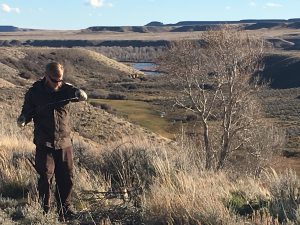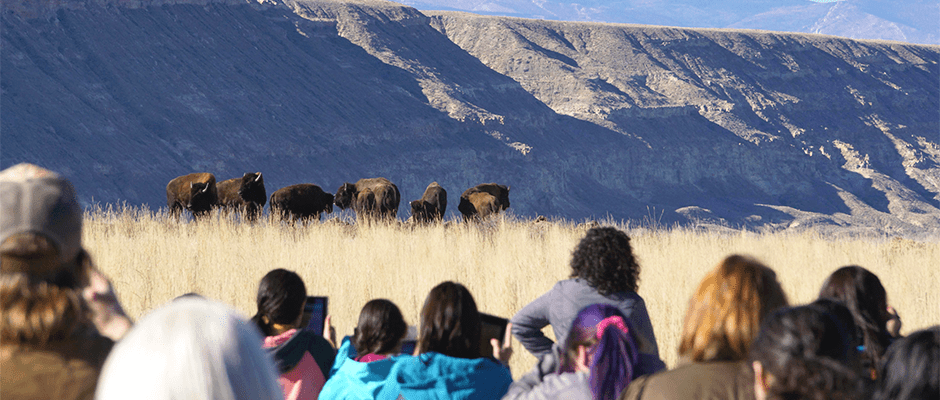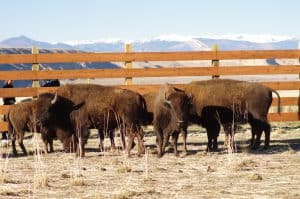Share this article
Bison return to Wind River Reservation
As of November 2, the Eastern Shoshone Tribe had restored six of the seven ungulates found in the area of Wind River Reservation in Wyoming before the arrival of Lewis and Clark: moose, whitetail and mule deer, elk, pronghorn and bighorn sheep. On November 3, came No. 7: bison.
The Service and the National Wildlife Federation (NWF) worked with the Eastern Shoshone to return bison to the land.

Dan Dewey and a Service crew remove more than a mile of decrepit barbed-wire fence, a potential hazard to bison, within the pasture on the Wind River Reservation. ©Pat Hnilicka/USFWS
“Recognizing both the ecological significance of buffalo as well as importance to tribal communities, NWF has partnered with tribes for over 20 years to restore and protect bison,” says Garrit Voggesser, NWF’s tribal partnerships director.
Pat Hnilicka, project leader of the Lander Fish and Wildlife Conservation Office in Lander, Wyoming, says that one of the jobs that the partners worked on was habitat improvement. They removed about a mile of decrepit barbed-wire fencing that bison could get tangled in. They are also working to rehab some irrigated meadows so that they are more productive and can support more bison.
Beyond ensuring that the land would be hospitable to bison, the project also needed bison that were of the type that roamed there hundreds of years ago.
The Service’s Lee Jones worked to find a herd of bison that not only fit that genetic requirement but also had a sterling reputation for being disease-free.
The disease brucellosis has cost billions in direct costs and money spent to develop a treatment. Brucellosis infects bison, and Jones says, the disease “is a huge concern in Wyoming.”
That led her to Neal Smith National Wildlife Refuge in Iowa. The bison there trace their lineage to the National Bison Range in Montana, and are ecologically appropriate for restoration in the Rocky Mountains. Iowa has also been brucellosis- and tuberculosis-free for many years, Jones says.
And on November 3, 10 bison were released on the reservation.
“While this was a culmination of years of hard work, it was a new beginning, not an ending. We plan to release more this coming fall,” Voggesser says. “We hope to have hundreds of buffalo on thousands of acres in the next few years.”
With those 10 bison, they are starting a new herd, which is not easy, Jones says. “It is an incredible step they took, absolutely incredible.”
The day of the release was equally incredible.
“’This is the best day of my life bringing the bison here,’” Jones remembers a bystander telling her.
This project is “a career highlight,” Hnilicka says.
“Today, Boy-Zhan Bi-Den – Buffalo Return in the Shoshone language – has become a reality,” says Jason Baldes, bison representative for the Eastern Shoshone Tribe. ”This restoration effort, 40 years in the making, returns buffalo to our lands, our culture, our community, and generations to come.”
Note: While bison and buffalo are used interchangeably, the scientific name for the North American animal is bison.
Update: The bison are already reproducing. The first bison calf to be born in 130 years on Wind River Reservation “hit the ground” May 2.
The U.S. Fish & Wildlife Service is a Strategic Partner of TWS.
Header Image: People watch the release of the bison. ©Pat Hnilicka/USFWS









